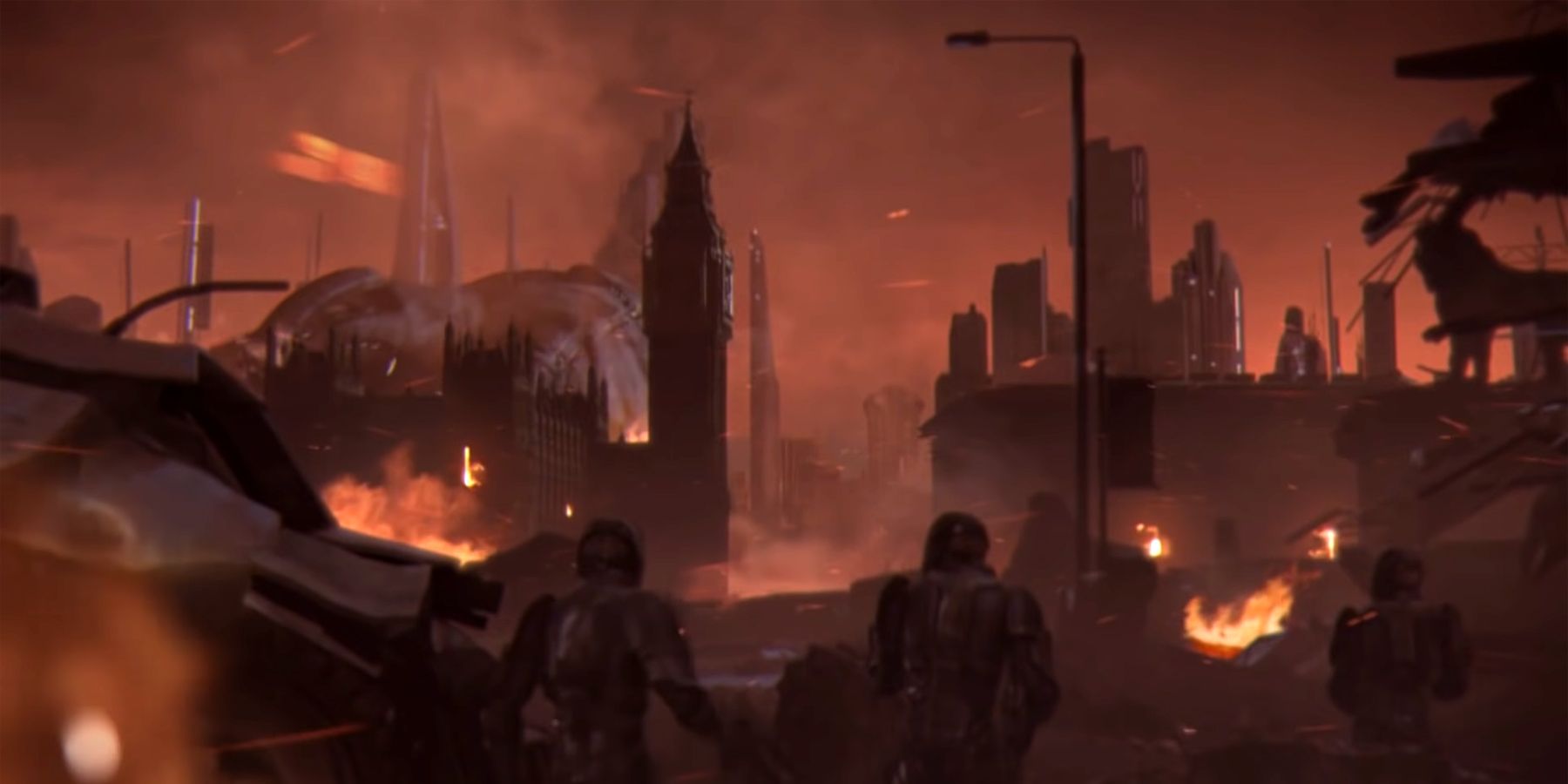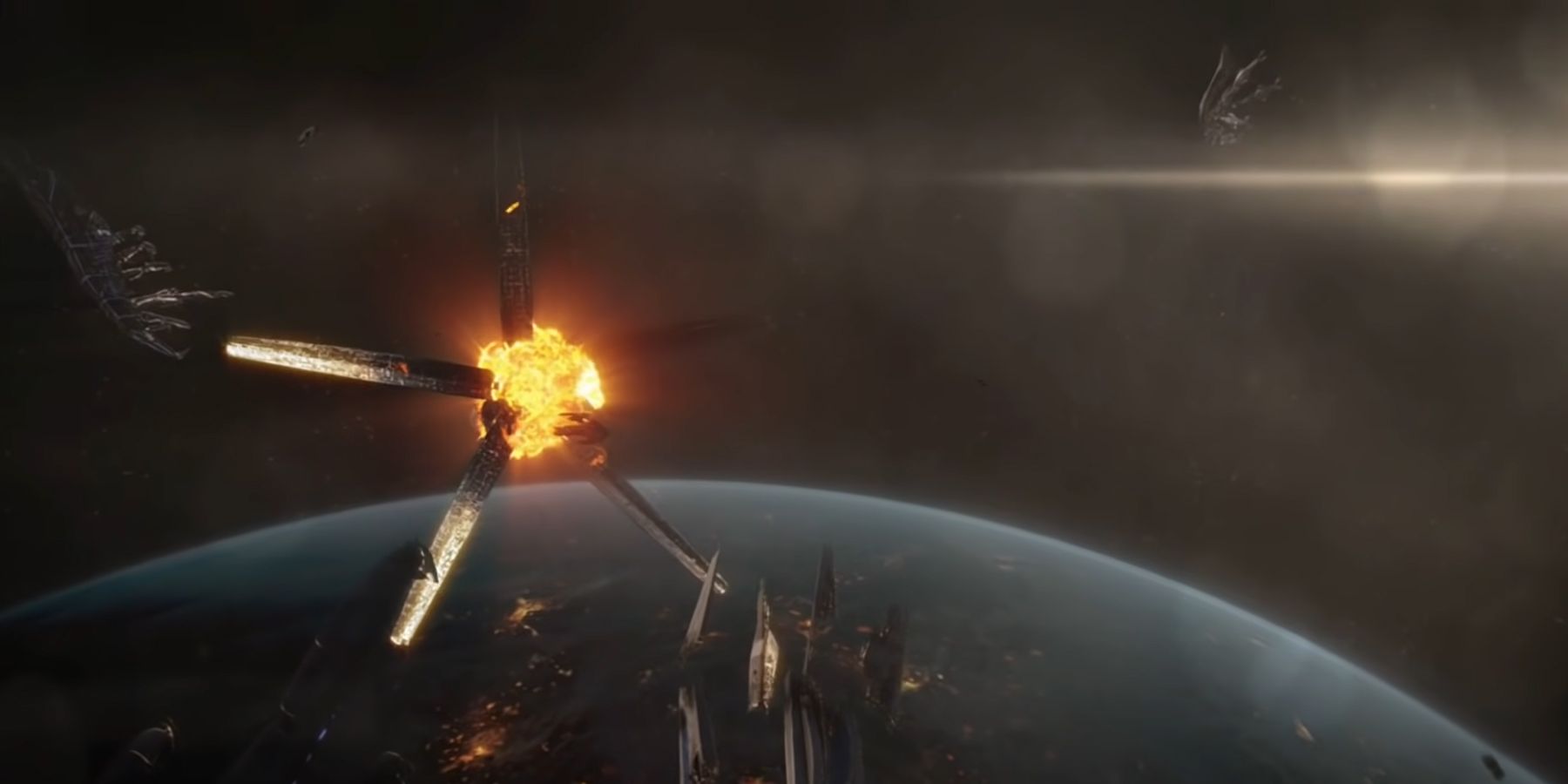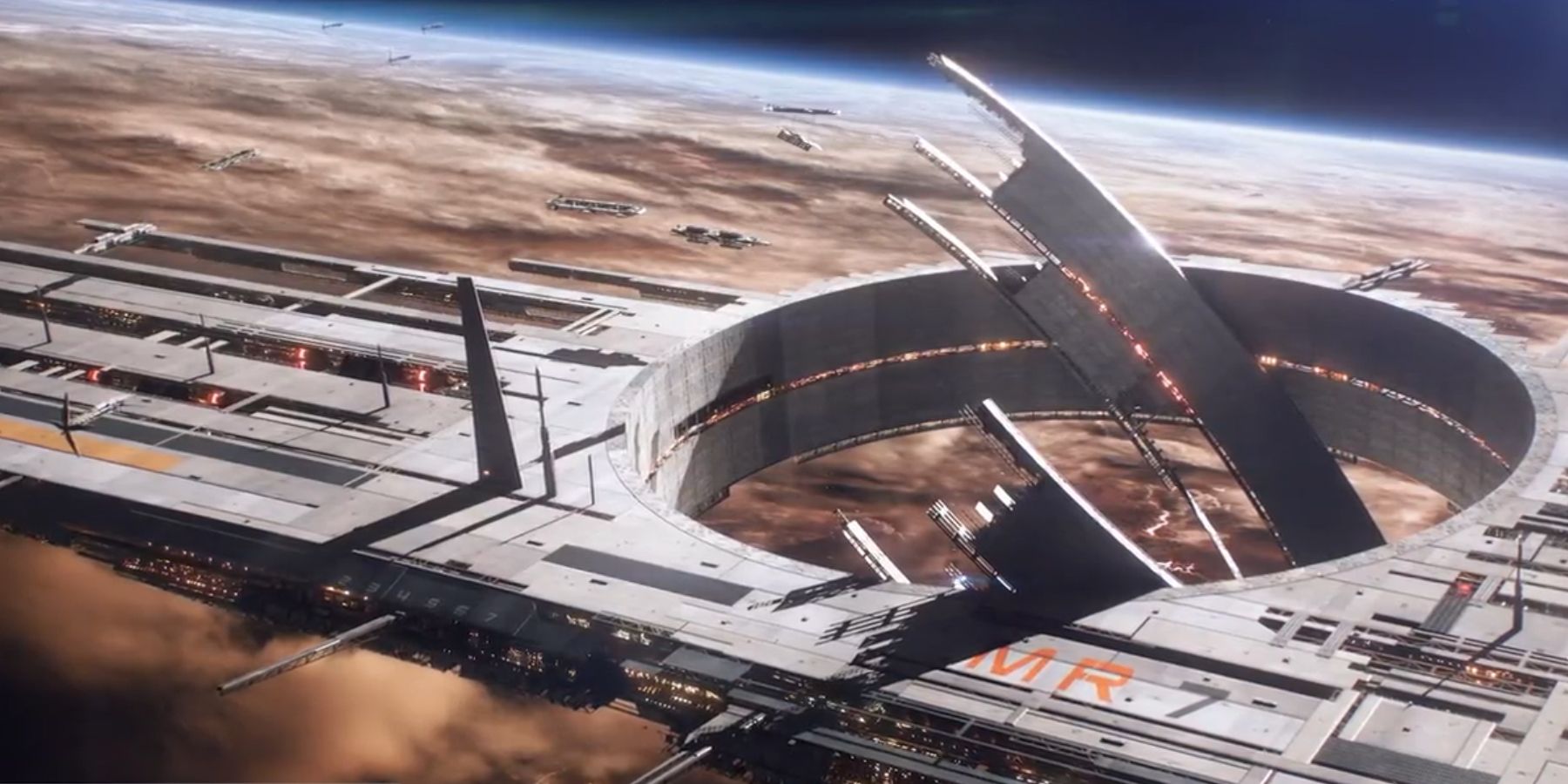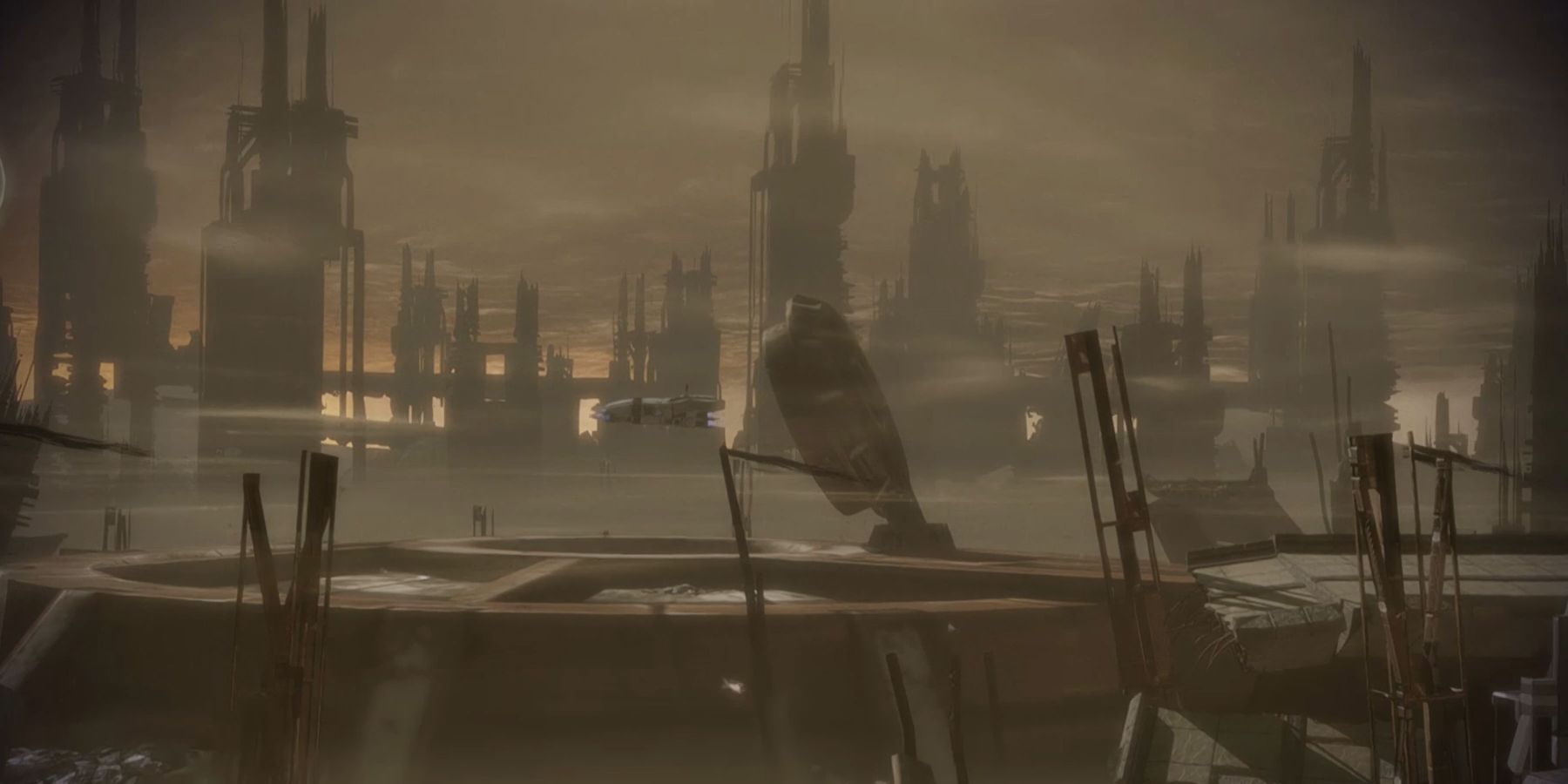The Mass Effect trilogy holds a special place in the hearts of many gamers. While Mass Effect 3 was controversial, and 2017’s Mass Effect: Andromeda launched in an unfortunate state, the franchise nevertheless continues to have an active following fifteen years after the original game’s release. Many fans were thus excited, if perhaps a little nervous, when BioWare announced Mass Effect 4 last year.
BioWare has been pretty quiet about Mass Effect 4 since the announcement, with the most recent teaser only showing a Mass Relay under construction and some cryptic lines from returning character Liara. As a result, fans don’t know much about the upcoming game, though the teaser trailer seems to imply that Shepard chose to destroy the Reapers at the end of Mass Effect 3. If that’s the case, it would be an excellent opportunity for Mass Effect 4 to explore the themes of a post-apocalyptic galaxy.
Mass Effect 3’s Destroy Ending
Mass Effect 3 lets players choose between up to four endings depending on their actions throughout the trilogy. Each outcome radically alters the Milky Way Galaxy, potentially turning all its inhabitants into cyborgs, making Shepard the Reaper’s overlord, or allowing the Reapers to exterminate all advanced civilizations. However, many believe that Mass Effect 4 takes place after ME3’s Destroy ending, where Shepard uses the Crucible to destroy the Reapers rather than control them or remove the Reaper’s reason to exist.
Players can and have made arguments for and against all of the trilogy’s endings. However, Mass Effect 3’s Destroy ending has a lot of adverse effects, such as the destruction of all artificial intelligence, including the Geth and Shepard’s AI squad member EDI. It also shows the Citadel exploding and breaking apart after the Crucible fires, whereas it only appears to be damaged in the Synthesis ending and remains fully operational in Control.
Similarly, the mass relays are left severely damaged in all three of the trilogy’s primary endings, possibly bringing the entire network offline. However, Destroy is the only ending where the galaxy is forced to repair them without the Reapers' help. It’s also the only one of Mass Effect 3’s endings where the narrator, in this case Admiral Hackett, specifically mentions the damage to the Relays.
The Impact of Mass Effect 3’s Ending
BioWare has never come out and said which ending is canon. However, the Mass Effect 4 announcement trailer all but confirms that the game takes place after Mass Effect 3’s Destroy ending, depicting the Citadel broken and abandoned in a field of debris. While Mass Effect 3’s Destroy ending shows that it is eventually rebuilt, that clearly hasn’t happened yet. Since the ending slides don’t give any indication of how much time has passed, it could be years or decades before the Milky Way fully recovers. The Twitter teaser shows that some rebuilding is underway, but we don’t know how far along that progress is.
That covers the damage caused by firing the Crucible in ME3 but doesn’t even touch on what the Reapers were doing throughout the game. London is in ruins when players go there during Mass Effect 3, and there’s no reason to believe that Earth’s other major cities faired much better. Meanwhile, the Turian capital of Palaven doesn’t seem to be doing much better, and the Asari homeworld of Thessia also came under direct assault.
As for the political consequences, the Batarian Hegemony doesn’t seem to exist anymore. Meanwhile, the Reapers effectively wiped out the Alliance’s civilian government in the opening hours of the invasion. Between that and the likely need to replace the entire Citadel Council, and the galaxy is left with three major political crises to deal with at once.
A Post-Apocalyptic Mass Effect 4
Mass Effect 4 wouldn’t be post-apocalyptic in the strictest sense, but it’s easy to imagine various planets existing on something of a spectrum. Some worlds might be much the same as before the war. Others might resemble the nuclear-blasted Krogan homeworld of Tuchanka or the dust-choked ruins of Feros, while most will probably fall between those extremes. Some of these communities might receive support from whatever interstellar governments remain. Others would probably be on their own, leaving the people to scrounge through the wreckage for survival. Even worlds that escaped without severe damage might suddenly find themselves cut off from the rest of civilization.
That’s not even getting to the colonies that might not even exist after the war. Some recently-settled planets have been evacuated, while the Reaper assault completely wiped others out. These worlds would be littered with overgrown bombed-out ruins inhabited by pirates and scavengers. There might even be room for some Mad Max or Fallout-style lawless wastelands on the fringes of galactic civilization.
However, the possibility of having planets with post-apocalyptic elements isn’t what makes Mass Effect 4 interesting. Again, the Mass Effect series already did that with Feros and Tuchanka. Instead, it’s the potential for how the game could apply post-apocalyptic themes and motifs to the galaxy at large. There's plenty of potential in cranking Mass Effect 2’s Terminus Systems up to eleven, spreading across most of the galaxy, with pirates and warlords battling for Control over vast stretches of former citadel space. Meanwhile, remote colonies would struggle to eke out a modest existence in the shadow of wrecked starships and shattered megastructures.
Overall, the visual motifs of Mass Effect 4 should emphasize the ideas of an advanced and once-powerful civilization going through a dark age. In a way, one could even compare it to the atmosphere of games like Elden Ring, whose environment design captures a similar feeling. Mass Effect 4’s galaxy probably wouldn’t be as far-gone as Elden Ring’s, of course, but that example expresses the concept well enough.
That also doesn’t mean Mass Effect 4 should lean so far into the aesthetic that it’s bleak and hopeless. On the contrary, Mass Effect’s story has always been optimistic, and such a radical change in tone would be antithetical to the series’ values. However, optimism isn’t mutually exclusive with post-apocalyptic themes, and the idea that things are bad now, but they were worse and will get better fits perfectly well with the game’s ethos. That, more than anything, is the feeling that Mass Effect 4 needs to capture.
Mass Effect 4 is in development.




